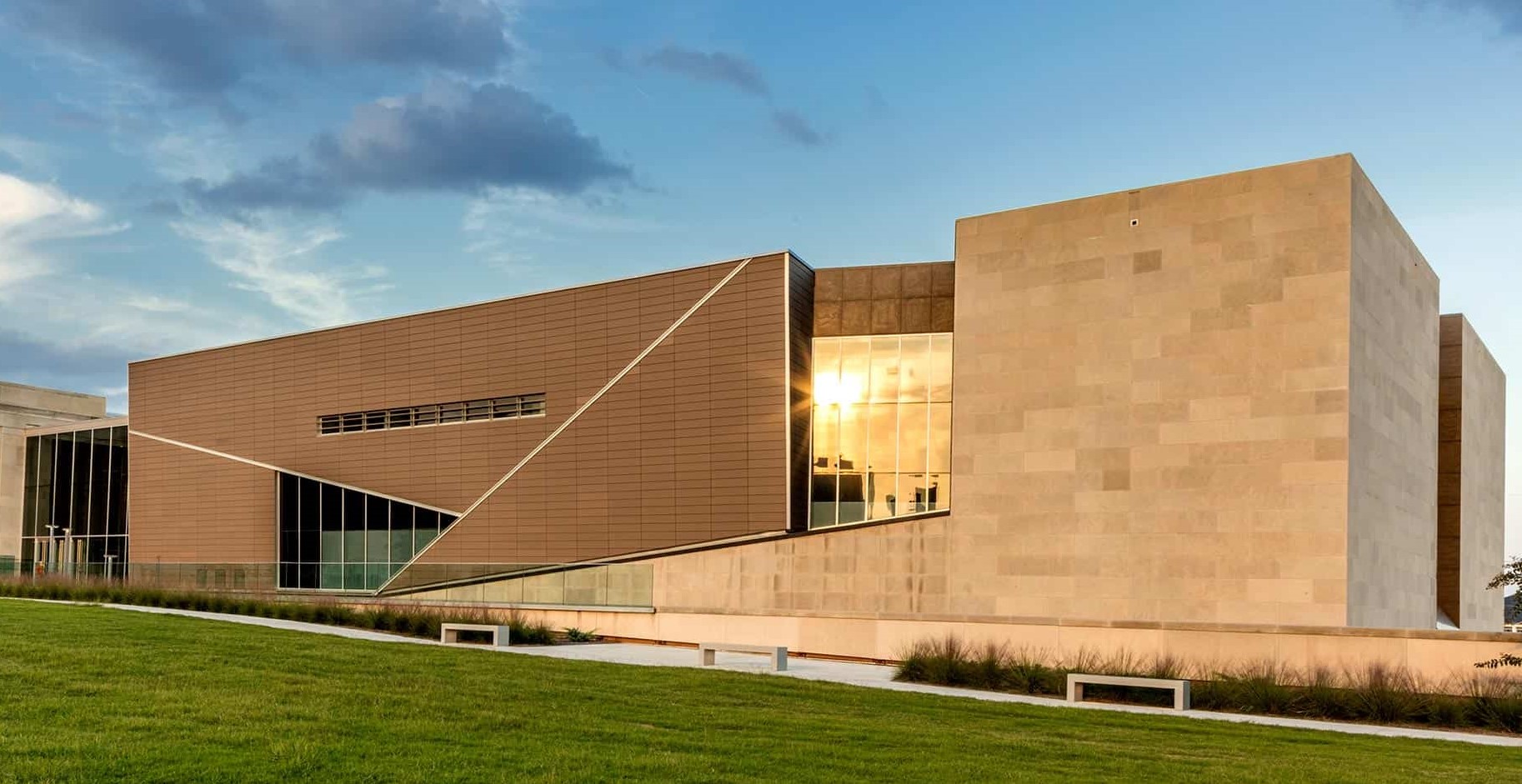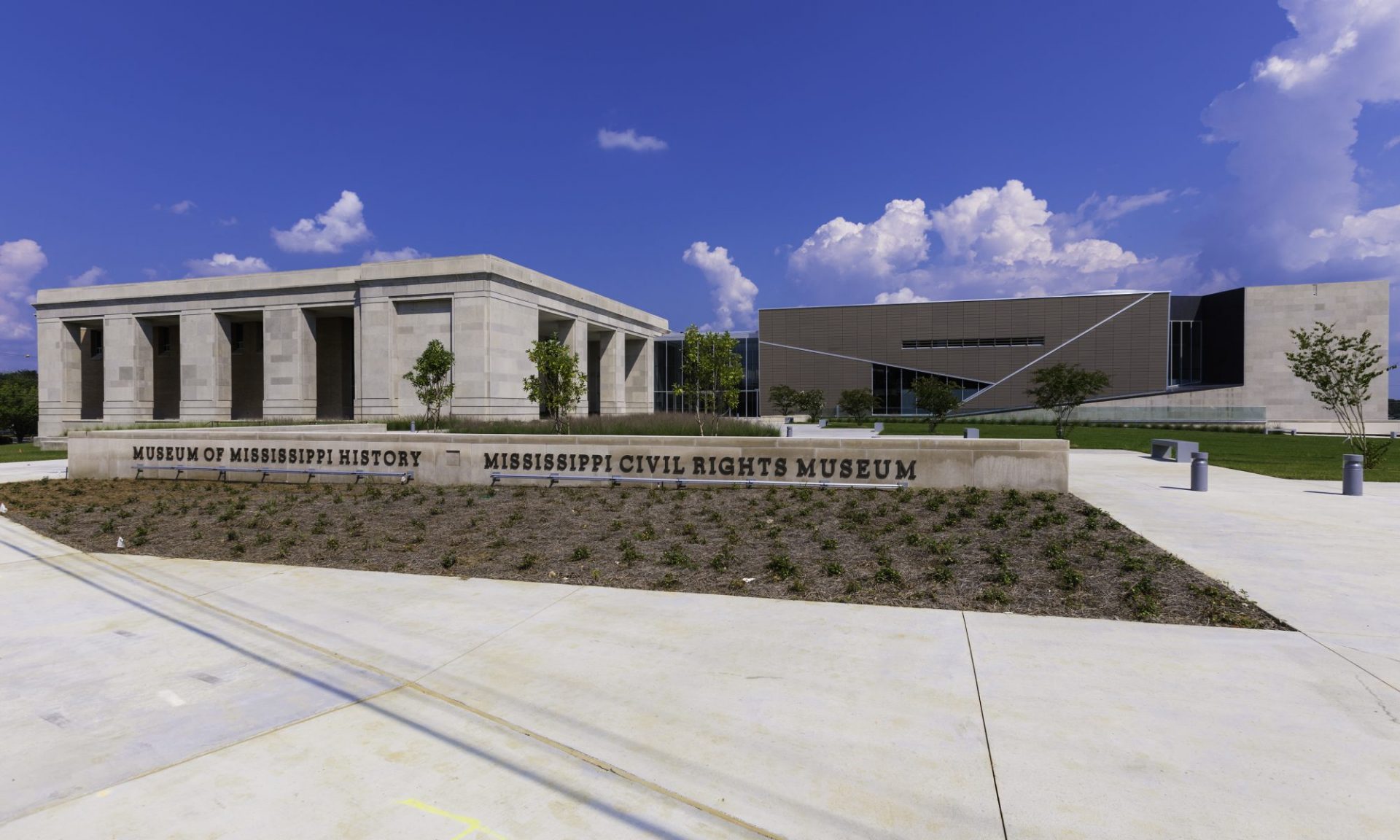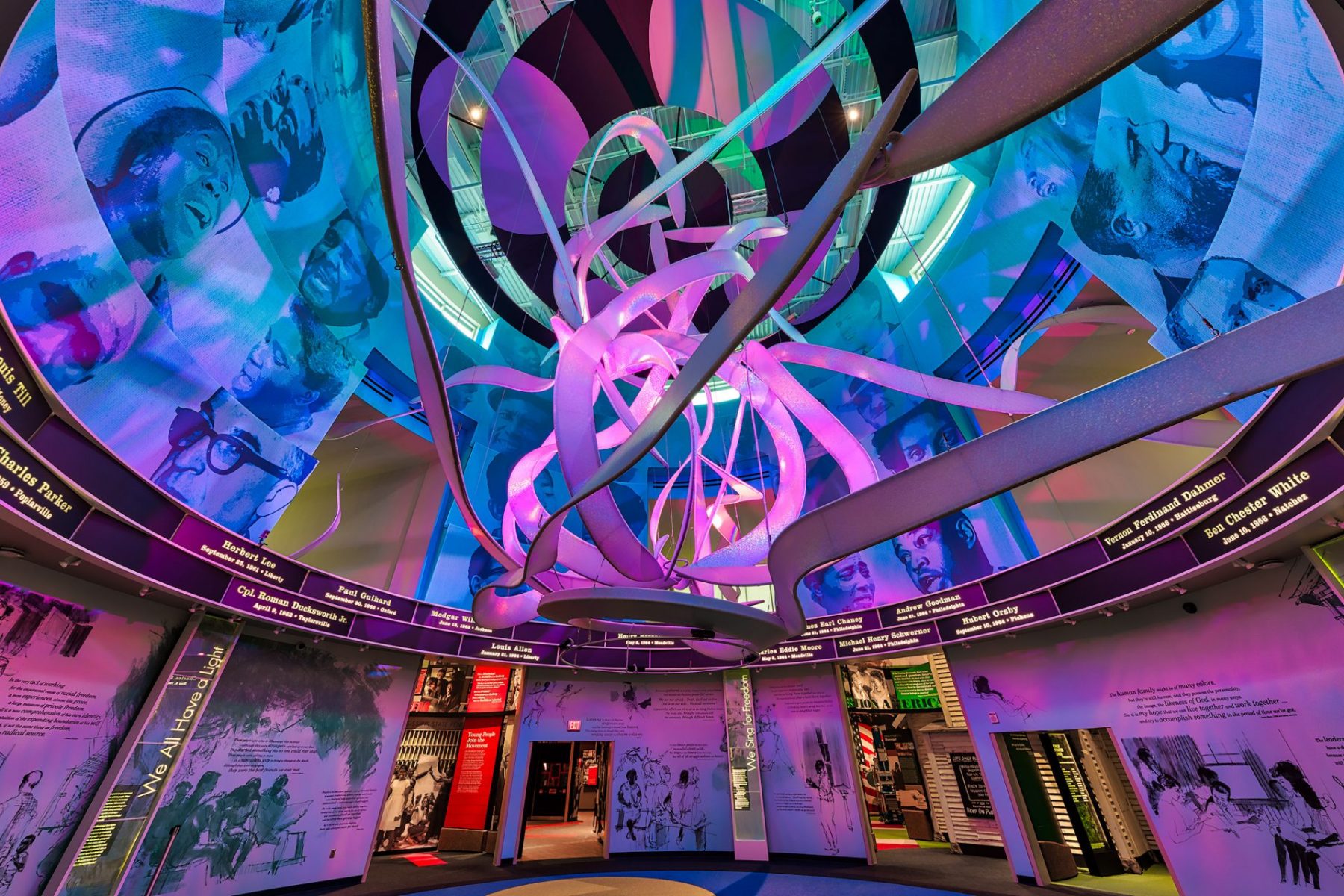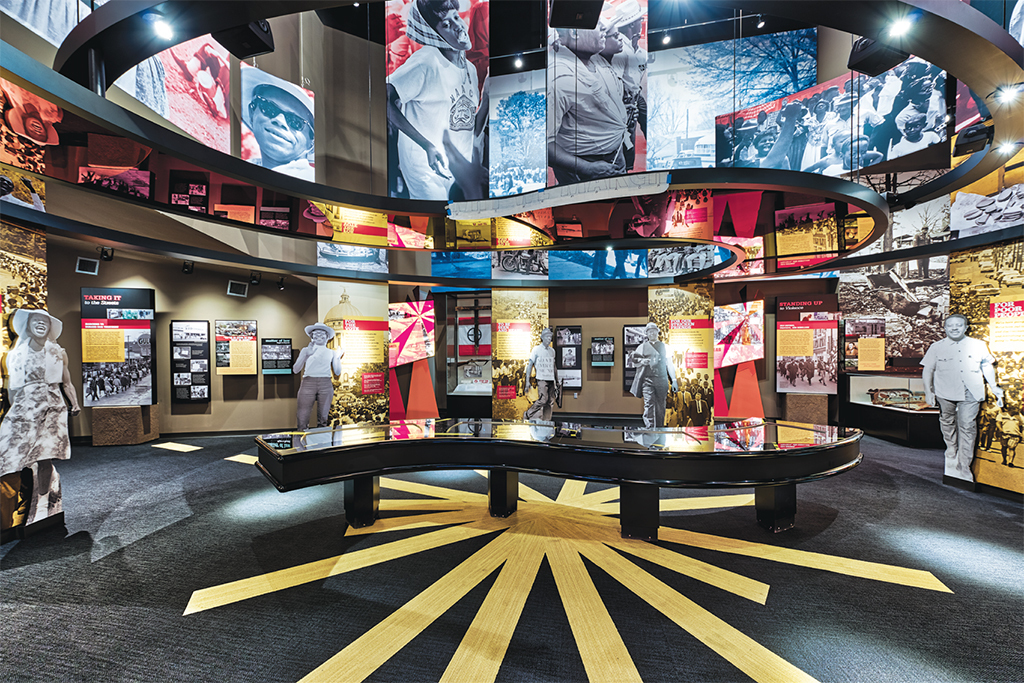After almost two decades of several attempts involving various missions, possible sites, alternate plans to attain necessary funding, different commissions and delayed political legislation, the Mississippi Civil Rights Museum (MCRM) opened its doors in 2017. Located at 222 North Street, Suite 2205, in downtown Jackson, Mississippi, its mission, as per its website, is “to document, exhibit the history of, and educate the public about the American Civil Rights Movement in the U.S. state of Mississippi between 1945 and 1970.” It is the first civil rights museum of the United States to be state-sponsored.

(No copyright infringment intended).
A common entrance and lobby connect the Mississippi Civil Rights Museum and the Museum of Mississippi History, at Suite 1206, which also opened in 2017. Often referenced as “Two Mississippi Museums”, both institutions are dedicated to providing greater depth and stronger insight into understanding the southern state’s extensive and complicated history. In “Museum of Mississippi History, Mississippi Civil Rights Museum Tell State’s Complex History” in the Meridian Star, Katie Blount, director of the Mississippi Department of Archives and History, comments, “These museums are telling the stories of Mississippi history in all of their complexity.” Leading the Mississippi Department of Archives and History, which operates the two new museums, Blount affirmed, “We are shying away from nothing. Understanding where we are today is shaped in every way by where we have come from in our past.” Its honest representation drew great praise from civil rights activists.

(No copyright infringment intended).
Its vision, as stated on its site, is to “share the story of the Mississippi movement that changed a nation …[and] promote a greater understanding of the MCRM and its impact as well as the strengths and sacrifices of its peoples.”
Upon first entering the museum, guests are led, chronologically, through spaces that detail life for Blacks in Africa, during the Trans-Atlantic Slave Trade and throughout Reconstruction and Jim Crow segregation. The presentation on how African-Americans created their own communities is a natural segue to a large space that features a tree. This tree greater highlights the discrimination and violence, especially lynching, allowed, even incited, against African-Americans. There are also five mammoth memorials of stone in which the names of more than six-hundred African-Americans who were lynched in Mississippi are engraved. These areas are purposely designed to give visitors a sense of restriction, as to more easily, though uncomfortably, identify with the pervasive restraints of slavery and its vicious legacy.
The remaining areas of the Mississippi Civil Rights Museum are much more capacious, including the eight interactive galleries that emphasize the thirty-one years when Mississippi was the epicenter of the Civil Rights Movement in the United States.
These galleries are laid out in a circle in which a space, “This Little Light of Mine”, is its nucleus. Posited within is a forty-foot sculpture, containing LED lights, that illuminates the space, and sounds of the Civil Rights Movement serenades guests. Designed by Cindy Thompson, the concept behind this interactive piece is both that every person has a “light” or value and there is always “light”, or hope, in every situation. Its illumination is contingent upon the entry of guests as they enter the gallery; the more who enter, the more the lights flicker. Every half-hour, civil rights anthems, “This Little Light of Mine” and “Ain’t Gonna Let Nobody Turn Me Around”, are scheduled to play.

(No copyright infringment intended).
The eight galleries, as described by the Mississippi Civil Rights Museum, are:
- “Mississippi’s Freedom Struggle sets the context for the Civil Rights Movement. Read quotations from the men, women, and children who risked their lives in the courageous campaign to gain freedom. Images of the people affected by slavery reflect the inhumanity of the institution and their determination to end it.
- Mississippi in Black and White covers the years 1865 to 1941, from the end of the Civil War through Reconstruction and beyond. Black Mississippians emerged from slavery as free citizens and established strong communities — despite oppression by white Mississippians. Explore the essential role of church and family in this gallery, and read about the African Americans who rose as leaders. Inspect artifacts — such as a “Colored” entrance sign and tools used by an African American blacksmith — to begin to understand the trials of this period. Five monoliths engraved with the names of lynching victims rise over this gallery.
- This Little Light of Mine is the heart of the museum, a soaring space filled with natural light from large windows. Civil rights activists are honored with words and images, and the music of the Movement emanates from a dramatic light sculpture. As more visitors gather and interact with the sculpture — adding their own “light” — it shines brighter and the music grows stronger.
- A Closed Society explores the years 1941 to 1960 when the experiences of Black Mississippians who served in World War II fueled the Civil Rights Movement. Hear first-hand accounts of veterans who fought for their country and returned to Mississippi motivated to fight for equality. Step into two immersive theaters to understand how the Brown v. Board of Education decision and teenager Emmett Till’s murder ignited the Civil Rights Movement. Step into a segregated classroom — the experience of white Mississippi students on one side, juxtaposed with the experiences of African-American Mississippi students on the other. Walk past the original doors of the Bryant Grocery store where 14-year-old Emmett Till had the fateful encounter with the store owner’s wife that would ultimately lead to his murder.
- A Tremor in the Iceberg During the early 1960s saw a new generation of activists who brought a fresh urgency to the Civil Rights Movement. Activist Bob Moses described these times as the “tremor in the middle of the iceberg.” Engage with a touch screen interactive exhibit to read personal stories of people who participated in the Freedom Rides in 1961 and see the police mug shot of every rider arrested lining the walls of the gallery. A re-created jail cell and a tear gas canister used during the integration of the University of Mississippi offer a sense of the brutal conditions and retaliation that activists faced. See powerful artifacts including the rifle used to assassinate civil rights activist Medgar Evers and experience an immersive theater commemorating Evers’ life and work.
- I Question America, covering the years 1963 and 1964, portrays the people who gathered in churches, Masonic halls, and community centers as local movements grew into coordinated state campaigns. Youths and seniors, middle class and poor, urban and rural people alike cast their ballots in a “Freedom Vote” and went to the Democratic National Convention to demand that their voices be heard. In a reconstructed country church, visitors can hear the compelling story of Freedom Summer. Use the interactive touchscreen displays to explore Sovereignty Commission files and witness the stories of Freedom Summer volunteers. Shards of glass from a bombed church, a burned cross, and an FBI fingerprint kit are among the many artifacts on display.
- Black Empowerment highlights the empowerment that took hold in Black communities from 1965 through the mid-1970s, urged on by successes such as the Voting Rights Act of 1965. A decade that began with the Freedom Riders and sit-ins ended with Black leaders running Head Start programs and serving as members of the state legislature. Explore the successes that Black citizens faced as well as the tragedies —including the murder of Vernon F. Dahmer Sr. A section of his bullet-pocked pickup truck rests beneath the photo mural of four Dahmer sons, all in the uniforms of their active duty military service, staring down at the charred crater where their home once stood.
- Where Do We Go from Here? This museum, like the movement it is named for, is intended to be a powerful and transformative experience. In this last gallery, visitors can reflect on what they have experienced here. To inspire conversation and consideration, read the words of Mississippians from all walks of life as they discuss the progress our state has made since the Civil Rights era and the challenges that remain. In this gallery, we invite you to share your thoughts and leave comments on your visit here.”
Since its opening, the Mississippi Civil Rights Museum has been visited by several hundreds of thousands of guests. There have been personal visits and well as educational and/or professional sessions, as the MCRM provides training as well as learning opportunities for business and the public.
It should be noted that adults use their own wisdom in bringing children to the museum because the MCRM honestly presents the brutal systematic oppression, devastation and destruction of African-Americans in Mississippi. Although some of the content may be difficult to experience, it is essential in truly understanding, respecting and honoring the battle for equality, civil rights and human sacrifices that forced change in Mississippi and the United States.
The museum is open, Tuesday through Saturday, from 9am to 5 pm, and on Sunday, from 1pm to 5pm. Aside from general admission, it honors Blue Star admission. There is also an option to purchase dual admission to the Two Mississippi Museums. The MCRM has “Free Third Saturday”, in which admission to both museums are free, every third Saturday of the month.
Additionally, there is a café and a museum store which sells various items, including books, in order to commemorate and share your experience.
Finally, the Mississippi Civil Rights Museum contains nine areas available, including an auditorium, plaza and meeting spaces, for rent in which events, from book signings and seminars to conferences and weddings, may be hosted.
